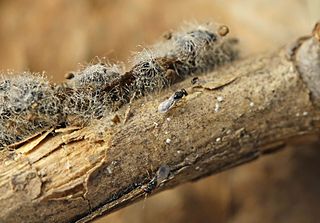
Per Albin Hansson was a Swedish politician, chairman of the Social Democrats from 1925 and two-time Prime Minister in four governments between 1932 and 1946, governing all that period save for a short-lived crisis in the summer of 1936, which he ended by forming a coalition government with his main adversary, Axel Pehrsson-Bramstorp. During World War II, in which Sweden maintained a policy of neutrality, he presided over a government of national unity that included all major parties in the Riksdag with the exception of the Communist Party. Forging the Social Democratic grip on Swedish politics that would last throughout the century, Hansson left an astounding legacy on his party as well as creating the idea of Sweden to become "Folkhemmet", "The People's Home". This remained intact until the early 1990s, including a strict policy of neutrality, a wide-stretching welfare state through parliamentary legislation, and reformist social corporatism rather than Marxist socialization of the means of production. Following the war, Hansson formed a Social Democratic cabinet enjoying absolute majority in the Riksdag before succumbing to a heart attack on his way home from work late at night on 6 October 1946.

David Heinemeier Hansson is a Danish programmer and the creator of the popular Ruby on Rails web development framework and the Instiki wiki. He is also a partner at the web-based software development firm Basecamp.
Awara, Awaara or Aawara may refer to:
Afrotroppopsis is a monotypic genus of hymenopteran insects of the family Eulophidae.
Aprostoporoides is a small Indomalayan genus of hymenopteran insects of the family Eulophidae which was described in 2004 with two newly described species from Kerala.
Baeoentedon is a genus of hymenopteran insects of the family Eulophidae, they are parasitoids of whitefly from the family Aleyrodidae which are found on trees of the genus Ficus. They have been recorded from Australia, China, India, Indonesia and Florida. A fifth species, Baeoentodon farazi, was described from Karnataka, India, in 2017.
Chouioia is a genus of hymenopteran insects of the family Eulophidae.
Colpoclypeus is a genus of hymenopteran insects of the family Eulophidae.
Eprhopalotus is a genus of hymenopteran insects of the family Eulophidae. Their distribution varies between species but ranges from Costa Rica, Mexico to Texas. There are currently 5 species of Eprhopalotus:

Euplectrus is a genus of hymenopteran insects of the family Eulophidae.
Inti levis is a species of insect in a monotypic genus in the family Eulophidae. It was discovered in Costa Rica and the Dominican Republic in 2010 by Christer Hansson.

Quadrastichus erythrinae Kim, 2004, is a small parasitoid wasp belonging to the family Eulophidae, but also a secondary phytophage by way of inducing galls on the leaves, stems, petioles and young shoots of various Erythrina species.

Tetraschininae is a subfamily of the chalcid wasp family Eulophidae. It is one of the largest subfamilies of the Eulophidae containing over 100 genera and nearly 3,000 species. The species of the family Tetrastichinae are found in almost any type of terrestrial habitat and have a worldwide distribution, except Antarctica. They show a varied biology and hosts for Tetraschine wasps have been identified from over 100 different insect families, across 10 different orders and they have also been recorded as being parasitoids on nematodes, mites and spiders' eggs. Some species are even phytophagous, while others are inquilines and yet others are gall formers.
Entiinae is a subfamily of the chalcid wasp family Eulophidae. It was formerly better known as the Euderinae but this name was determined to be a junior homonym. It consists of 18 genera.
Entedoninae is a subfamily of chalcid wasps from the family Eulophidae which includes over 90 genera.
Leprosa milga is a species of Afrotropical chalcid wasp in a monotypic genus from the family Eulophidae. It is a species of gall wasp which induces the production of galls on the seed pods of species in the genus Eucalyptus. It probably originated in Australia but has been recorded from South Africa and Italy.

Tetramorium hispidum is a species of ant in the family Formicidae.

Aphaenogaster uinta is a species of ant in the family Formicidae.

Camponotus planatus, known generally as the compact carpenter ant or short carpenter ant, is a species of ant in the family Formicidae.










